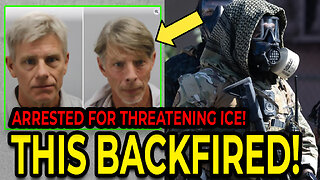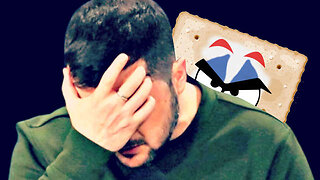Premium Only Content

Northern Kentucky Project: Observational Data During Second Visit of Bush Honeysuckle Removal
This video goes over some observations made during my second visit to a treatment parcel. The inital treatment was a fall treatment mechanical removal. Tool used was a brushsaw for branches, and to cut down the average sized bushes. A chainsaw was used to cut stumps larger than the brushsaw could handle and treated with Tordon RTU as a direct stump application.
Intial treatment was limited due to seed development already underway on mature shrubs, so speed at dropping was more important than complete removal.
Large stumps were recut to open fresh wood and treated with Tordon RTU in a conservative fashion along the outside ring/cambium using a smal 1.5" foam brush to prevent excess runoff contamination directly to soil. Majority of larger stems known to be treated were effective at killing plant, though some did show signs of resistance and survived. All bush honeysuckle resprouts shown major signs of struggle and it is unknown if this was due to trama incured during treatment, or if it is caused by lower light conditions and increased competition after being put through shock preventing healthy regeneration. Follow-up treatment methods were discussed and alternatives were given as potential rotation for a fall removal and spring retreatment schedule.
Future video will go over second plot which has a Spring initial treatment and heavy removal up front due to no pressure to drop mature trees because of late stage seed development encountered with a Fall to Spring treatment schedule.
-
 18:36
18:36
Moon-Struck Land Management
2 months agoFelling Trees for a Softer Forest Edge
631 -
 LIVE
LIVE
Laura Loomer
3 hours agoBREAKING: MTG Resigns From Congress, Mamdani Meets Trump
1,287 watching -
 LIVE
LIVE
PandaSub2000
1 day agoLIVE 10:30pm ET | BUZZ/DISNEY TRIVIA NIGHT with YOU!
214 watching -
 15:23
15:23
T-SPLY
7 hours agoBUSTED Assistant Principle And Brother Arrested For Wanting To Kill ICE!
2.04K5 -
 22:06
22:06
Jasmin Laine
8 hours agoCBC STUNNED Into SILENCE After JD Vance’s BRUTAL Message to Canadians
1.97K11 -
 2:04:27
2:04:27
TimcastIRL
6 hours agoAntifa CONVICTED Of TERRORISM, Fears Of CIVIL WAR Grow | Timcast IRL
214K64 -
 2:16:43
2:16:43
TheSaltyCracker
4 hours agoIt's Over Zelensky ReeEEStream 11-21-25
64.3K115 -
 LIVE
LIVE
Drew Hernandez
21 hours agoMIKE HUCKABEE EXPOSED FOR OFF RECORD MEETING WITH CONVICTED ISRAELI SPY?
1,003 watching -
 LIVE
LIVE
SynthTrax & DJ Cheezus Livestreams
14 hours agoFriday Night Synthwave 80s 90s Electronica and more DJ MIX Livestream SYNTHWAVE / ANIME NIGHT
203 watching -
 14:25
14:25
Tactical Advisor
12 hours agoReal Life John Wick Suit | Grayman & Company
11.8K2